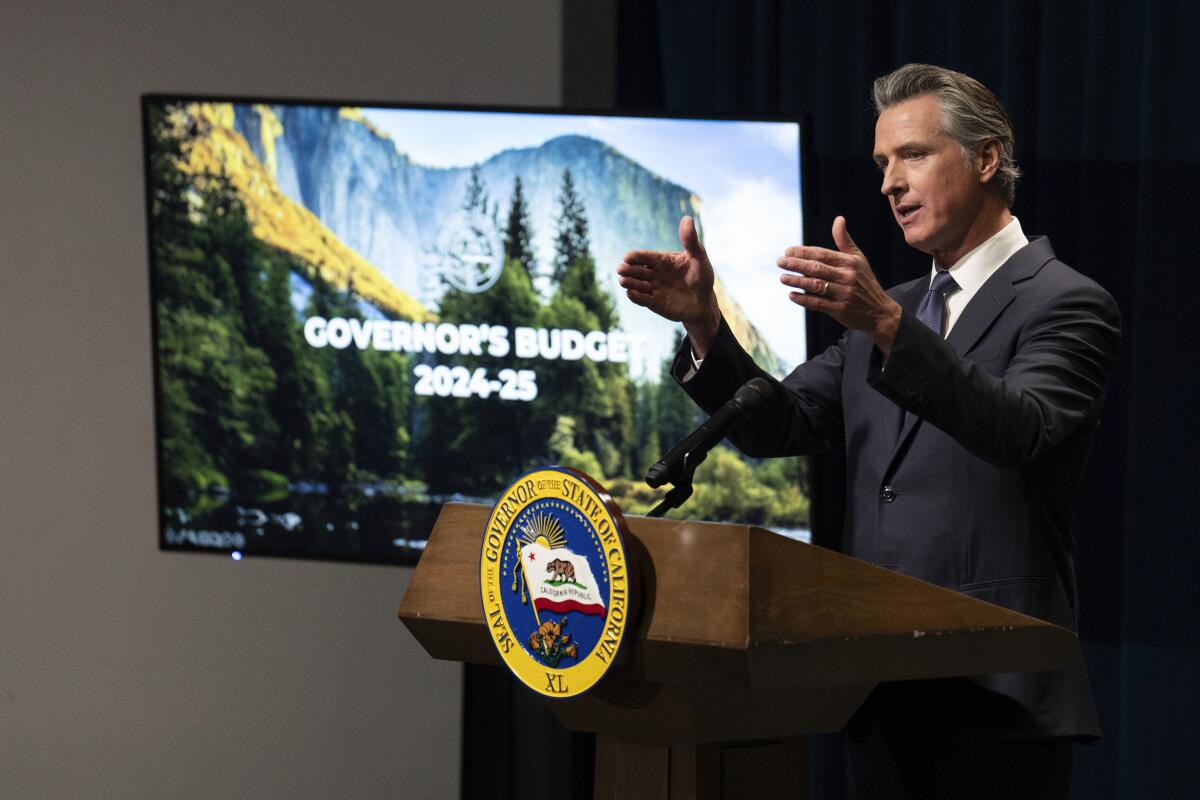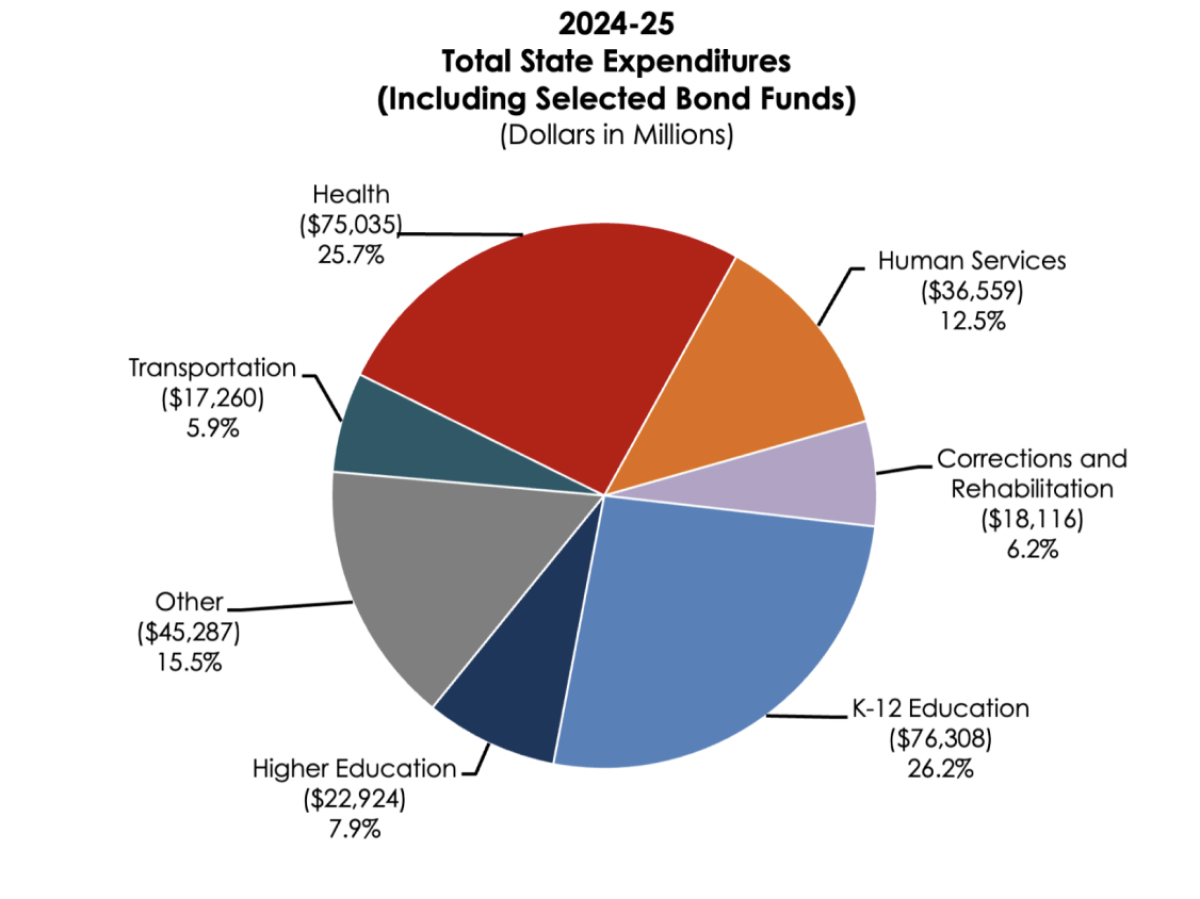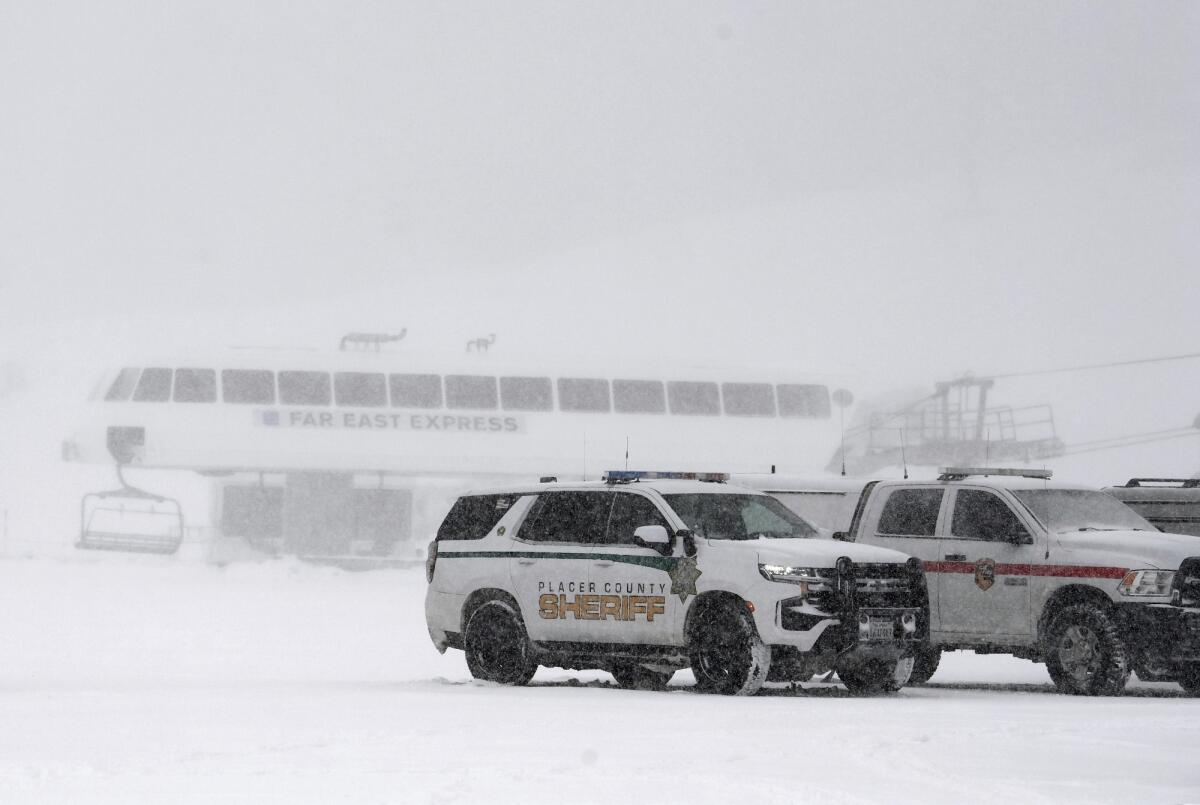Here’s how Gov. Newsom wants to spend (and cut) next year

Good morning. It’s Thursday, Jan. 11. Here’s what you need to know to start your day.
- Here’s how Gov. Newsom wants to spend (and cut) next year
- 1 killed after 2 are buried in avalanche at California ski resort
- 18 things to do in California’s enchanting storybook village by the sea
- And here’s today’s e-newspaper
Sign up for Essential California
The most important California stories and recommendations in your inbox every morning.
You may occasionally receive promotional content from the Los Angeles Times.
Here’s how Gov. Newsom wants to spend (and cut) next year
As Gov. Gavin Newsom walked through his 2024-2025 state budget proposal Wednesday, he framed his plan as a return to “normalization after a period of a tremendous amount of distortion.”
And while he outlined his priorities for how the state will spend the money it has, the money California won’t have became a focal point during his presentation.
Officials are bracing for a roughly $37.9-billion deficit. To close that gap, Newsom announced that he plans to pull from the state’s rainy-day reserves. To do that, he’d need to declare a budget emergency this summer.
That alone wouldn’t cover the shortfall. Newsom also proposed spending cuts and other “belt-tightening,” like freezing new contracts; forgoing new cars, phones and other equipment; and conducting audits that could impact how much the state funds housing initiatives, public transit, health services and more.
In total, Newsom’s proposal would give the state nearly $20 billion fewer dollars to spend compared with the budget adopted last June for our current fiscal year.
Why the shortfall?
That can be chalked up to “a confluence of weaker-than-expected state revenues, delayed tax deadlines and overspending based on inaccurate budget projections,” Times reporter Taryn Luna explained, noting that this would mark the second straight year of a deficit after a massive $100-billion budget surplus during the COVID-19 pandemic.
Newsom said the state basically “had a blindfold on” as it tried to estimate incoming tax revenue. He blamed volatile capital gains revenue plus the devastating storms last winter that led the IRS to significantly delay deadlines for the vast majority of California taxpayers. Without actually seeing how much tax revenue was coming in, officials could only guess.
“The deficit deepens state government’s economic challenges and could pose political problems for Newsom this year as he grapples with lawmakers and interest groups to cut $8.5 billion in planned spending, including from housing and climate programs,” Taryn reported this week.
How does Newsom want California to spend next fiscal year?
The governor’s proposal allots $291.5 billion in spending, including:
- More than $15.3 billion to address the homelessness crisis
- $8.7 billion for mental health efforts, with more than half of that allotted for youth behavioral health. Newsom said the goal is “treating brain health earlier before we punish it later.”
- $1.1 billion over four years for public safety, including $347 million in response to organized retail theft and $88 million to address the opioid and fentanyl crisis
- $126.8 billion for K-12 education and $44.8 billion for higher education
- $48.3 billion to address the climate crisis, plus over $10 billion in funding from the Biden administration. Newsom said California is peerless among U.S. states in its efforts, noting the historic Klamath Dam removal project as an example of work to restore and protect a major river ecosystem
- $41 billion on infrastructure projects for 2024

Newsom’s plan also notes spending cuts and delays to a number of departments and programs. That includes nearly $300 million in cuts and billions more in delayed funding for transportation programs, along with education, housing and climate-related programs.
Newsom downplayed the cuts to climate change efforts as “modest,” pointing to a notable boost in federal funding.
He also signaled that he might seek to restrict funding for a law he signed last year that increases the minimum wage for healthcare workers to $25 per hour. That could delay those workers’ pay hike if state revenue doesn’t hit a certain threshold.
His plan would also maintain funding for many of his expensive policy promises, Taryn noted, like expanding Medi-Cal eligibility to all immigrants regardless of legal status. While that policy has drawn criticism, his plan to dip into reserve funds “sounds a new alarm for the Golden State,” she explained.
“His plan to spend $13.1 billion of the reserves means less funding will be available to backfill spending if revenues continue to decrease, possibly forcing more painful and drastic cuts in the years ahead.”
This starts the budgetary process, but Newsom said the “prime-time” event would come in May when his office revises its proposal after lengthy negotiations with the state legislature.
If you are bored, brave or interested enough, you can explore Newsom’s full budget proposal here.
Today’s top stories

Lake Tahoe avalanche
- One person was killed and another was injured when an avalanche struck the KT-22 area of the Palisades Tahoe ski resort Wednesday morning, authorities said.
- Forecast warned of ‘considerable’ avalanche danger ahead of Tahoe fatality.
Climate and environment
- From California to New England to Europe, many areas of the Northern Hemisphere are approaching a “snow loss cliff” due to global warming, researchers say.
- After a trust fall left him paralyzed, a climber scales 3,000-foot El Capitan using only his arms.
Business
- After a door plug on a 737 Max 9 blew open mid-flight, CEO Dave Calhoun told Boeing employees there would be “100% transparency” around “our mistake.”
- Meta will limit the reach of harmful content to teens on Facebook and Instagram amid scrutiny.
Politics
- 5 takeaways from Ron DeSantis and Nikki Haley’s first one-on-one debate.
- Sara O’Neil and her family moved from California to Iowa, fleeing COVID restrictions. Now they’re part of a group with outsize power to pick the next Republican presidential nominee.
- ‘Only you can save your own lives’: Disinformation and fake news flood Taiwan before election.
More big stories
- Disgraced legal legend Tom Girardi will face a jury in Los Angeles this spring on charges he stole millions from clients, a federal judge has ruled.
- A burger chain manager was fined for using “straw donors” to back ex-Sheriff Alex Villanueva’s 2018 campaign.
- California moves closer to becoming the first state to ban tackle football for kids under 12.
Get unlimited access to the Los Angeles Times. Subscribe here.
Commentary and opinions
- Gustavo Arellano: Don’t force kids to learn cursive. Mine is terrible, and I’m doing just fine.
- Anita Chabria: Who is to blame for California’s budget woes? Try Mother Nature.
- Mary McNamara: The age of the high-flying Emmys is over.
- Opinion: Why pushing STEM majors is turning out to be a terrible investment.
- Opinion: I wrote a Black true crime book 20 years ago. Why is the genre still so white?
- Opinion: Trump’s attempt to intimidate a federal appeals court could ensure his defeat.
Today’s great reads
The muxe, Mexico’s ‘third gender,’ are part of a worldwide LGBTQ+ movement. The muxe — Indigenous Zapotec people in Mexico — view themselves as neither man nor woman. They embrace a distinct ‘third gender,’ part of a burgeoning LGBTQ+ movement worldwide.
Other great reads
- This actress discovered a passion for DJing during the strike.
- Captions took over TV. Why can’t they win the silver screen?
- Is an ADU right for you? L.A. homeowners and experts share what you need to know.
How can we make this newsletter more useful? Send comments to essentialcalifornia@latimes.com.
For your downtime
Going out
- 👚👢The coolest Ojai shops for when you want to bring the vibes back to L.A.
- 💏🏽 No chemistry right away? Here’s why you should still go on that second date.
- 🥾🌊 18 things to do in Carmel, California’s enchanting storybook village by the sea.
Staying in
- 📚Six books by Latino authors to help you bounce back from the post-holiday blues.
- 📖 This L.A. flash-fiction star thinks novels are “saggy.” Her own debut proves her wrong.
- 🧑🍳 Here’s a recipe for New Orleans-style beignets.
- ✏️ Get our free daily crossword puzzle, sudoku, word search and arcade games.
And finally ... from our archives

On Jan. 11, 1935, Amelia Earhart, one of the world’s most celebrated aviators, made the first successful solo flight from Hawaii to California. Two years after her history-making flight, Earhart disappeared over the Pacific Ocean while embarking on a circumnavigational flight of the globe.
In 2018, The Times’ Steve Padilla wrote about her bones being found, and why the discovery was great for science but sad news for mystery buffs.
Have a great day, from the Essential California team
Ryan Fonseca, reporter
Elvia Limón, multiplatform editor
Kevinisha Walker, multiplatform editor
Laura Blasey, assistant editor
Check our top stories, topics and the latest articles on latimes.com.
Sign up for Essential California
The most important California stories and recommendations in your inbox every morning.
You may occasionally receive promotional content from the Los Angeles Times.






